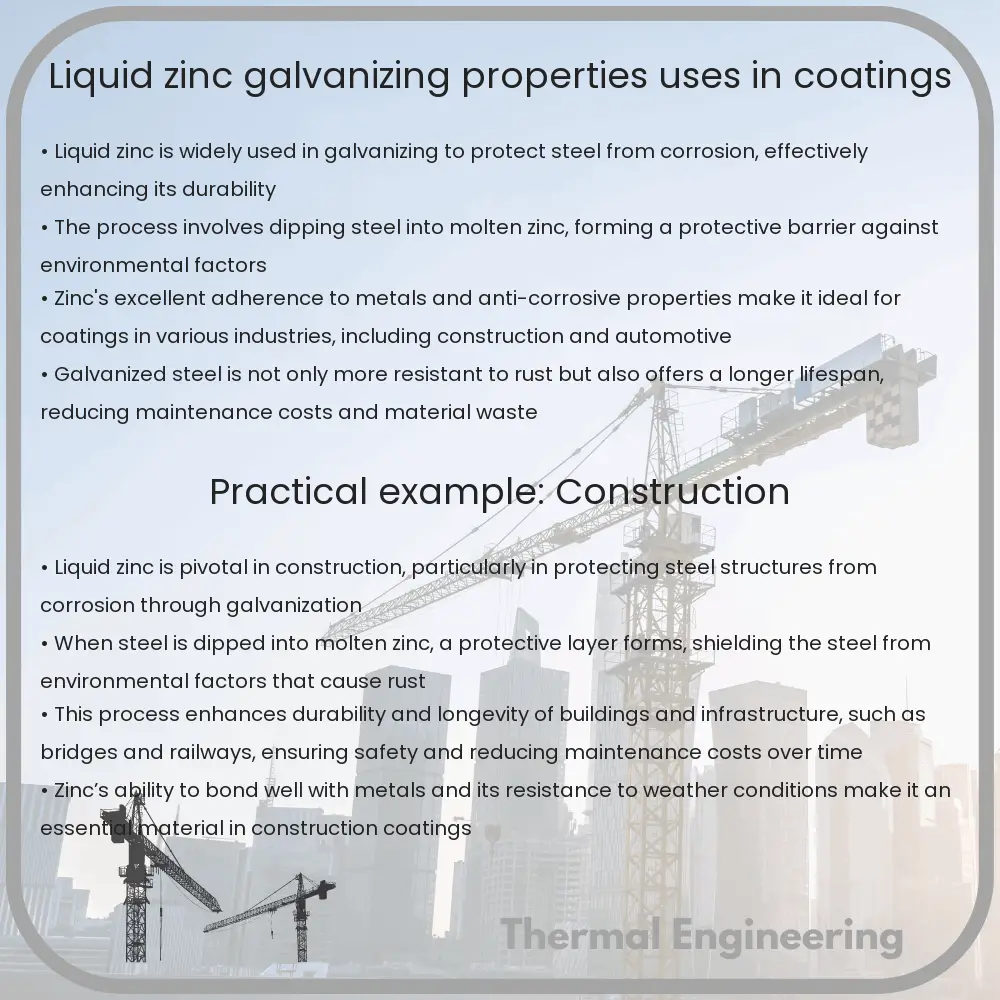Learn about liquid zinc and its use in galvanizing for corrosion protection and extending the lifespan of metals.

Understanding Liquid Zinc and Its Galvanizing Properties
Zinc, a versatile metal, is widely used in various forms to protect steel and iron from corrosion. A particularly effective method involves the use of liquid zinc for galvanizing. This process not only extends the lifespan of metal products but also enhances their resistance to environmental stressors.
What is Galvanizing?
Galvanizing is a metallurgical process that involves coating the surface of one metal, typically steel or iron, with another metal to protect the underlying material from corrosion. The most common method of galvanizing uses zinc, due to its robust anticorrosive properties. When exposed to the atmosphere, zinc reacts with oxygen and carbon dioxide to form a dense, adherent layer of zinc carbonate, which effectively seals the metal underneath from corrosive elements.
Properties of Zinc in Galvanizing
Zinc’s effectiveness in galvanizing stems from its chemical properties. It has a relatively low melting point (419.5°C or 787.1°F), which makes it suitable for the hot-dip galvanizing process. This process involves submerging steel or iron components in molten zinc, resulting in a durable zinc coating. Zinc also has the ability to sacrificially corrode to protect the underlying iron or steel. This sacrificial action occurs because zinc has a more negative electrochemical potential compared to iron, making it anodic to iron. When both metals are in contact and exposed to moisture, zinc corrodes preferentially, thereby protecting the iron or steel from rust.
Uses of Zinc Coatings
The use of zinc coatings can be found in various applications, encapsulating the need for durable and long-lasting protective measures:
- Construction: Zinc coatings are employed in the construction industry for items such as steel beams, outdoor structures, and roofing materials, offering robust protection against weather elements.
- Automobile industry: Automobile manufacturers apply zinc coatings to car bodies and parts to prevent rust and enhance the vehicle’s lifespan.
- Consumer goods: Everyday items like nuts, bolts, and wires are often galvanized to prevent early wear and tear due to oxidation.
Advantages of Using Liquid Zinc for Galvanizing
The application of liquid zinc through hot-dip galvanizing brings several benefits, which include:
- Comprehensive coverage: The molten zinc flows into all cracks and crevices of the metal, providing complete coverage and superior protection against corrosion.
- Durability: A zinc coating typically has a longevity of several decades under normal weather conditions, significantly extending the life of metal structures.
- Economic efficiency: Given its long-term protective properties, galvanizing with zinc reduces the need for frequent maintenance and replacements of parts and structures.
In conclusion, liquid zinc and its galvanizing properties play an essential role in protecting metals from corrosion, thus ensuring their durability and functionality in numerous industrial and everyday applications. By understanding the galvanizing process and zinc’s protective characteristics, industries can effectively apply this knowledge to enhance the quality and longevity of metal products.